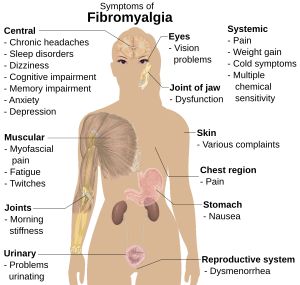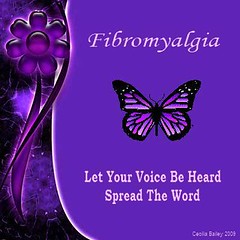 Image by @superamit via Flickr
Image by @superamit via FlickrBack in August 2009, I wrote a whole month of posts around the theme of tomorrow. For some reason, in my mind I associated "To Do" lists and achieving goals with the theme of tomorrow. Reviewing a few of those posts today, I can see how ambitious I was in trying to plan for tomorrow and report back progress on my goals here on my blog.
I think the biggest lesson I learned that month is that the uncertainties and fluctuations in my disability and chronic illnesses make it really hard to have a "To Do" list.
"To Do" Lists Don't Work
Sure I can write up a whole list of what I want to accomplish. I could probably fill pages and pages of a word processing document with all the things I want to do. After all, I'm not working so I have the time, right? Well, lesson learned, I might have the time, but I definitely lack the energy to get all these things done.
My ability to get things done is dictated by how much energy I have on a given day. Since my energy level is, on average, only 30% of what an average healthy person has, I'm not getting a lot of things done each day before I'm all tapped out.
Even simple, every day tasks are taking 2 to 10 times longer to do.
A Reminder List Works Better
I realized that having a "To Do" list contributed to feeling worse, not better, about myself and my situation. In that moment, inspiration struck and I got an idea to use a "To Do" list in a different way. Rather than focus on tasks and goals, I decided to use my list to focus on six coping strategies to use each day. Here is my original list:
*My 6 Most Important Things To Accomplish Each Day*
- Rest: 15-20 minutes, at least 1 to 2 times a day.
- Stay Inside My Energy Envelope: by pacing, planning, resting, checking in, delegating and saying "no."
- Work in 15 minute intervals: Use a timer and take breaks.
- Exercise: move my body any way I can for a total of 10 to 15 minutes a day.
- Journal: write down what I want to be, my mantra for the day and my favorite moment of each day.
- Have fun every day: for at least 15 minutes each day.
I'll be honest. I still am working on making these six strategies part of my daily routine since I wrote this list over 15 months ago. Even though this list is a work in progress, it helps me feel good about myself and my coping abilities because every day I can check off at least one thing from my list that I was able to do.
Q. What is my favorite and most accomplished list item?
A. Have fun every day!
What would you put on your own Six Things "To Do" Every Day list? Share your answer in a comment.







![Reblog this post [with Zemanta]](http://img.zemanta.com/reblog_b.png?x-id=d356e68e-9c9e-44c9-9333-021f6b1d11a8)

![Reblog this post [with Zemanta]](http://img.zemanta.com/reblog_b.png?x-id=6e3fcdd9-83fd-4227-aec2-262e06b85493)








![Reblog this post [with Zemanta]](http://img.zemanta.com/reblog_b.png?x-id=92f239dd-b027-4493-9ab6-b54a0de02ede)

![Reblog this post [with Zemanta]](http://img.zemanta.com/reblog_b.png?x-id=00492d03-0d6a-416e-af7b-c205c3e893e1)